The unsolved mass murders that forced Johnson & Johnson to put anti-tamper measures onto the bottles of their medicines.
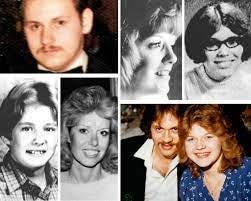
On September 29th 1982, a young girl went to her parents complaining of feeling unwell in the early hours of the morning. To try and ease her pain Mary Kellerman’s parents gave her a Tylenol capsule before sending her back to bed. Not too long after she had the tablet, Mary’s father “heard his daughter coughing and what sounded like the family hair dryer fall to the washroom floor.”.
He instantly went to check and he found his 12-year-old passed out on the floor. The call to emergency services was at 6:33 am and just five minutes later the ambulance had gotten Mary from her home in Elk Grove Village to the Alexian Brothers Medical Center, her heart stopping on the drive.
Mary Kellerman was pronounced dead at 9:56 am the same day.
Her autopsy was performed the next day and it wasn’t until October 1st that it was determined that her cause of death was a “result of acute cyanide intoxication.”. This was the first of seven people to lose their lives due to cyanide intoxication.
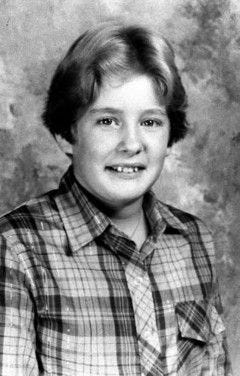
On September 29th 1982, Adam Janus woke up for his shift as a supervisor with the U.S. Postal Service despite the fact he had been unwell the past for days. On his lunch break, Adam came back home and took a Tylenol to help with his headache before napping. His wife went to wake him up when it was time for him to head back to work but Adam wouldn’t wake up. Emergency services were called at 1:33 pm and an hour later he was admitted to the hospital.
Adam Janus was pronounced dead at 3:15 pm, his cause of death was cyanide intoxication.

Back at Adam’s home, his family were preparing arrangements for him after his passing. Stanley Janus, Adam’s younger brother, went into the washroom before walking out and telling his wife that he didn’t feel good. After finishing his sentence, Stanley collapsed into his wife’s arms.
The family around ran out of the home to go to the neighbour, an off-duty nurse, for help whilst someone called the emergency services at 5:40 pm. When everyone returned they found Stanley passed out in the kitchen and Theresa Janus in the living room also passed out. The couple were both showing symptoms of being in comas. Both were taken to the hospital right away.
Stanley Janus was pronounced dead at 8:15 pm.
Theresa Janus was resucitated and put into the ICU. She passed on October 1st.
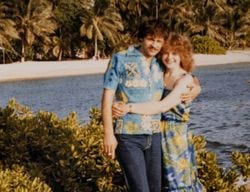
That was three lives all lost in Arlington Heights because of cyanide intoxication, bringing the total up to four lives taken.
On September 29th, Mary McFarland was at her job at the Illinois Bell Phone Center when she started feeling unwell and took a Tylenol so she could focus on what needed to be done. She was admitted to the Er at the Good Samaritan Hospital at 7:26 pm after passing out at work.
The next day at 3:15 am Mary was found with no vital signs.
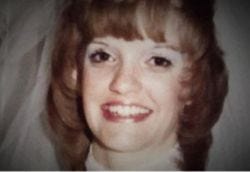
On September 30th, Mary Reiner had just given birth to her fourth child and was taking Tylenol to manage the pain of postpartum healing. Her husband, Ed, had just left the home to run an errand and when he returned he found Mary in the living room chair, making gurgling noises. He would soon see that she was seizing.
Paramedics rushed Mary to the Central DuPage Hospital but in a short few hours, Mary Reiner was pronounced dead at 9:03 am.
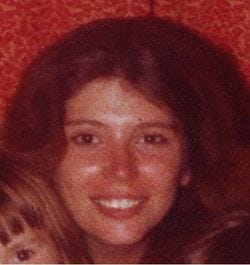
The seventh victim wasn’t discovered until October 2nd when her sister came by to check in on her.
Paula Prince had just gotten home on the 29th of September after working as the flight assistant on a short flight from state to state. It’s unclear what exactly happened on her final day of life but Paula went unheard of for days.
Her sister had finally decided enough was enough and went to check on her sister only she found Paula’s body. Carol called the police at 5:45 pm and an hour later Paula Prince was officially declared dead but it’s believed she died on the 29th.
There was an open bottle of Tylenol in the bathroom with only one pill missing.

All seven victims had died from cyanide intoxication.
Over the next few days, panic settled in as officials tried their best to maintain order in the city. Testing was performed on pills recovered from the Kellerman and Janus households. A team confirmed the presence of cyanide in both bottles.
Within the first 48 hours, Tylenol was pulled from the shelves by a mass recall by Johnson & Johnson. People were either throwing away their bottles or sending them to testing but it was still a struggle to get the message out to the public.
Mass panic caused Halloween activities to be cancelled out of fear there would be cyanide in the candy.
To this day the case remains unsolved but there were three main suspects, one of which was jailed in relation to the case.
Suspect one was a man named Roger Arnold, then 48, who worked at the dock of the Jewel warehouse in Melrose Park. The police learned of Arnold from a bar owner in Lincoln who had overheard two customers talking about Arnold having bought a large quantity of cyanide in March 1982. They also mentioned that Arnold had been acting erratically.
Arnold’s apartment was searched on October 11th 1982. Police found five guns with an assortment of ammunition. He had multiple books on explosives and poisons one of the books, titled “The Poor Man’s James Bond” even included how to make potassium cyanide. He had a collection of laboratory-grade vials, beakers and test tubes some of which contained white granulated powder in the bottom. According to the police Arnold admitted to possessing cyanide in his home but none was found.
Seven months after the poisonings, Arnold was charged with murdering 46-year-old John Stanisha. Arnold walked into a bar and shot John before yelling “you turned me in” or something similar. He walked out right after only to later realise that he had murdered the wrong person.
Arnold was sentenced to 30 years for the killing but he was ruled out for the Tylenol attacks.
Suspect two was a man named Kevin Masterson, then 35, who had a reported long-standing grudge against the Jewel store chain. It is reported by his landlord that the grudge came from an incident where Materson’s wife at the time was roughed up by staff after being accused of shoplifting. Masterson believed this incident was why he and his wife would later divorce.
There was a nationwide search for Masterson. He turned himself into the FBI in Los Angeles where he was held on a warrant for possession of marijuana. He too was ruled out for the Tylenol murders.
Suspect three came about after news broke that a letter was sent to Johnson & Johnson threatening more poisonings unless $1 million was placed inside a postal box at Continental Bank in Chicago, the letter was found on October 8th. Fingerprints on the letter linked back to a man named James Lewis who lived in Chicago but went by the alias James Richarson. He too had a nationwide manhunt for him which ended in his arrest in New York City during December 1982.
Lewis was tried and convicted in the extortion case, during the sentencing hearing U.S. Attorney Dan Webb called Lewis “a walking crime wave”. Lewis was sentenced to 10 years for the extortion attempt.
The day after his sentencing, June 15th 1984, Lewis had an interview where he revealed he felt that he was on trial for the Tylenol murders rather than the extortion but he maintains that he isn’t the killer. He claims that the letter was an attempt to bring attention to his wife’s employer Lakeside Traveller after her pay bounced.
Before the Tylenol Murders, Lewis was suspected in a murder case in 1968 in Kansas City, it was dismissed on a technicality. He was accused of murdering and dismembering an elderly man, Raymond West, in connection to a fraud scheme. Raymond was one of Lewis’ clients as a tax accountant. Raymond was found in his attic with his leg cut off, he was in plastic bags. He was so badly decomposed that they couldn’t find a cause of death.
Lewis was indicted but charges were dropped after the judge revealed that Lewis was not read his Miranda Rights meaning all evidence gathered was inadmissible. After release, Lewis settled in Greater Boston.
In 2004, Lewis was charged with raping and kidnapping a woman in Cambridge, Massachusetts. Once again his crimes were dismissed right before the case went to trial the as the victim refused to testify.
Despite having three suspects to the case it remains unsolved to this day.
Comments
Post a Comment